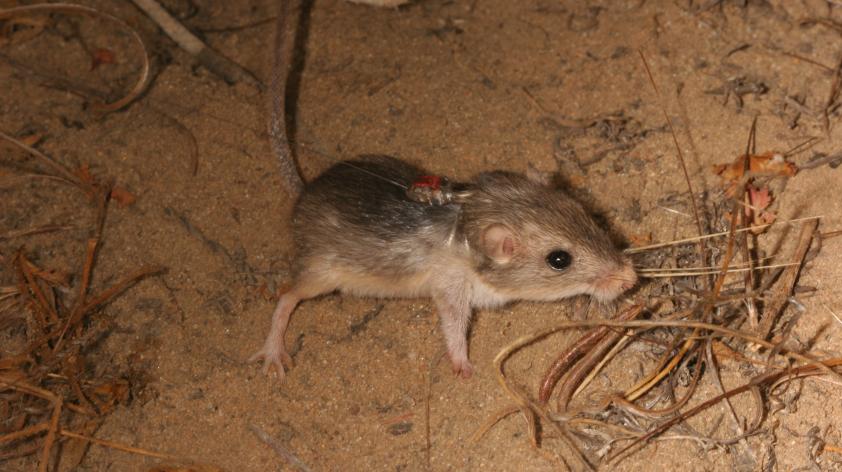
Using genetics to save California's endemic rodents
What a lot of people may not know is that California has the greatest number of endemic species of any state in the country. Endemic meaning they are limited to a specific region and found nowhere else in the world. Most of California's endemic mammals are rodents that have become specially adapted to California's various native habitats.
For example, Stephens' kangaroo rat (Dipodomys stephensi) prefer open grasslands and sparse coastal sage scrub, Pacific pocket mouse (Perognathus longimembris pacificus) are only found along the sandy Pacific coast of Southern California, and San Bernardino kangaroo rat (Dipodomys merriami parvus) prefer alluvial scrub habitats that are dependent on periodic flooding. Endemic species are more vulnerable to extinction due to their geographic isolation and specialized niches. Habitat destruction and alteration in California due to human activity has resulted in the decline of all three of these now federally listed species. At the San Diego Zoo Institute for Conservation Research, Conservation Genetics has been working closely with Recovery Ecology in a joint effort to save these endangered rodents.
Genetic tools can support conservation management programs in various ways. For example, we use genetic markers to measure relatedness of Pacific pocket mouse maintained at the captive breeding facility here in the Safari Park. Relatedness is an indicator of the degree of consanguinity between two individuals; a healthy and sustainable population is such with low levels of inbreeding or consanguinity.
Using genetic tools, we were able to detect individuals related at the parent-offspring or full sibling level in the Pacific pocket mouse captive population. Recommendations were made to avoid mating those individuals to prevent inbreeding. The first release of captive Pacific pocket mouse is planned later this year, and we hope to support the program by identifying the parents of any new offspring found at the site, as well as monitoring the retention of genetic diversity in the newly established population.
For the Stephens' and San Bernardino kangaroo rat projects, it is our goal to apply genetic tools to understanding the current genetic diversity and population structure of these endemic rodents across their geographic range for their conservation management. We have developed a set of genetic markers for Stephens' kangaroo rat that allow us to measure genetic variation in the species and are currently in the process of defining an additional set of markers for San Bernardino kangaroo rat. These markers will be used to assess levels of connectivity/isolation between populations, and to detect signs of population expansion/contraction throughout their range.
The taxonomic status of these kangaroo rat species can also be examined using DNA sequence data. Combining knowledge of current population genetics with the evolutionary history of these species, as it relates to their distribution, will aid recovery plans by identifying genetically valuable conservation units for their management in the wild.
Continue to follow my posts as I update you on the progress of my projects.













